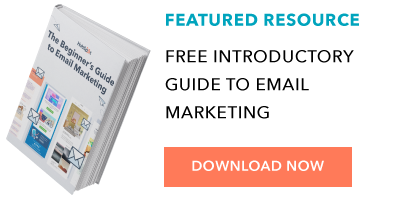How to Create a Holiday Marketing Campaign: A Step-by-Step Guide

By cstec@hubspot.com (Carly Stec)
The malls are decked with holly, your inbox is filling up with holiday-themed promotions, and you’ve deemed it socially acceptable to start listening to your favorite holiday playlist on Spotify… or maybe that’s just me.
Either way, the holiday season is here, and marketers are gearing up to finish off the year strong. But just like shopping for gifts, planning your holiday campaign is something you don’t want to shove off until the last minute.
There’s going to be a lot of spending going in over the next month or so, which is why it’s important to have a plan for reaching your customers and prospects before your competitors do.
Haven’t started planning your campaign yet? Don’t panic.
We’ve mapped out a comprehensive guide with everything you need to launch a holiday marketing campaign this season. From offer templates to free holiday-themed stock photos, we’ve peppered this step-by-step guide with resources designed to get your campaign up and running right away.
1. Decide on a campaign theme.
While creating content has become ingrained in the day-to-day lives of most inbound marketers, launching a campaign is a little different. Unlike a tweet or an infographic, campaigns require you to align all of your marketing channels around one specific goal or message.
Holiday campaigns — like all campaigns — typically run for a concentrated period of time. Depending on your industry, they can start as early as October and often spill over into January.
Now that you know what you’re in for, let’s not waste any more time. Below we’ll kick off this process by walking you through establishing your campaign and offer.
2. Choose your campaign goals.
Before you start creating an offer, you need to determine what it is that you’re looking to achieve. What is the ideal outcome of this campaign?
Once you define your focus, you can begin to create goals that will be used to benchmark your campaign’s performance once it’s wrapped. Your goals should be specific, measurable, attainable, relevant, and time-bound (SMART goals, for short). Here’s an example of how to structure this type of goal:
Generate [number] leads focused on [topic/product] by [date]
Depending on what you want to get out of your campaign, your goals might look something like this:
- Generate 1,000 leads who are interested in our annual holiday sale by December 5, 2021.
- Generate 5,000 sign-ups for our holiday shopping app by November 30, 2021.
- Collect $50,000 in donations for charity XYZ by December 20, 2021.
To help you better align your marketing efforts with SMART goals, check out this free goal setting template. You can use this template to summarize your goals, calculate your greatest marketing need, and set deadlines.
3. Define your target audience.
With goals in place, the next step is to define your target audience. The more information you …read more
Source:: HubSpot Blog









